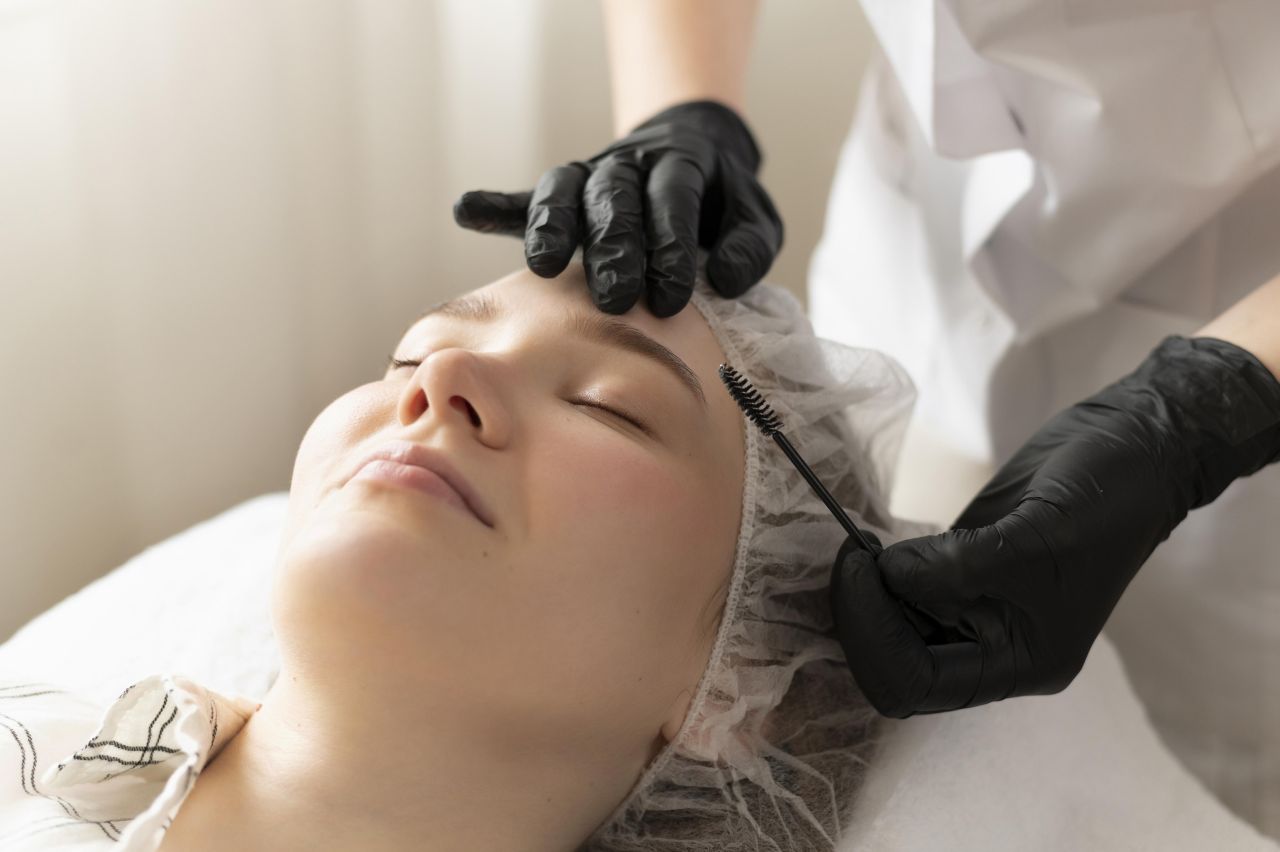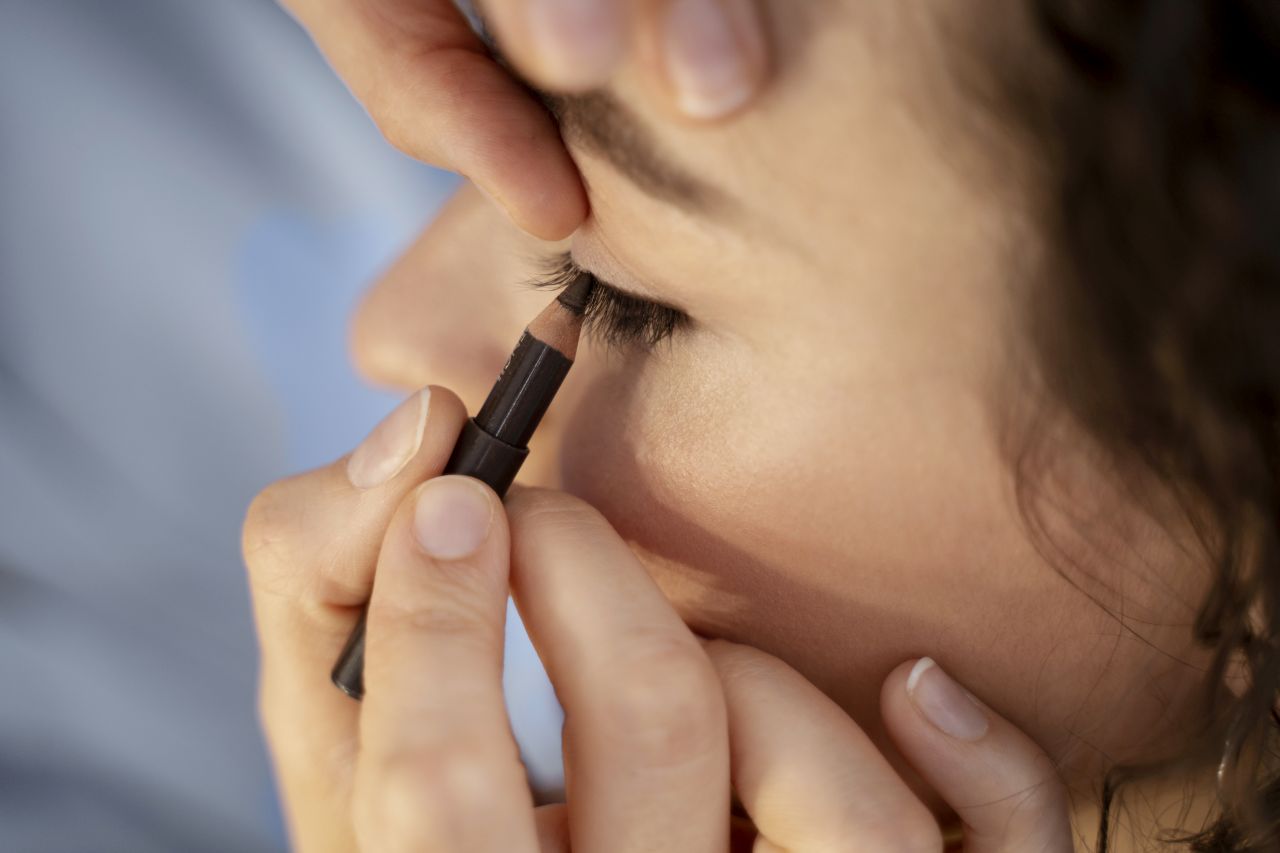In the pursuit of timeless beauty, eyeliner tattoo procedures have emerged as a popular choice for those seeking a permanent makeup solution. These procedures promise to enhance the eyes’ appearance with long-lasting pigment, sparing individuals the daily hassle of applying eyeliner. However, the success of an eyeliner tattoo hinges on various crucial factors that contribute to achieving optimal results. Let’s explore these factors in detail.
Skill And Experience Of The Technician
At the core of every successful eyeliner tattoo lies the expertise and proficiency of the technician performing the procedure. A skilled technician possesses the dexterity and precision necessary to create clean, symmetrical lines that complement the client’s eye shape and desired aesthetic. Years of experience refine their technique, enabling them to navigate intricacies such as varying eyelid contours and skin textures with finesse.
Artistic Talent
Eyeliner tattooing is as much an art form as it is a technical procedure. A skilled technician approaches each eyeliner tattoo as a canvas, understanding the nuances of eyelid anatomy and aesthetics. They have an innate ability to visualise the desired outcome and translate it into precise, aesthetically pleasing lines that enhance the client’s eyes.
Technical Expertise
Beyond artistic flair, technical proficiency is essential for executing flawless eyeliner tattoos. Technicians undergo rigorous training to master the intricacies of tattooing techniques, including needle control, pigment application, and depth of penetration. They understand how different skin types and textures can influence the tattooing process and adapt their technique accordingly to ensure optimal results.
Practical Experience
Experience is the greatest teacher in the world of eyeliner tattooing. Seasoned technicians have honed their craft through years of practice, encountering a myriad of eyelid shapes, skin conditions, and client preferences along the way. This hands-on experience equips them with the insights and problem-solving skills necessary to overcome challenges and deliver exceptional outcomes consistently.
Continuous Learning
In a field as dynamic as cosmetic tattooing, ongoing education and skill development are paramount. Top-tier technicians prioritise continuing education opportunities, staying abreast of the latest techniques, trends, and innovations in eyeliner tattooing. Whether attending workshops, participating in advanced training courses, or collaborating with industry peers, they are committed to refining their skills and expanding their knowledge base to better serve their clients.
Client-Centric Approach
Above all, skilled technicians prioritise the needs and preferences of their clients. They take the time to listen attentively to each client’s desires, offering personalised recommendations and guidance based on their expertise. By fostering open communication and building trust, they create a supportive environment where clients feel empowered and confident in their decision to undergo an eyeliner tattoo procedure.
Quality Of Equipment And Pigments
The quality of equipment and pigments used during the eyeliner tattoo procedure significantly influences its outcome. High-quality tattooing devices ensure precise application and minimise discomfort for the client. Similarly, using premium pigments enhances colour retention and longevity, resulting in vibrant, fade-resistant eyeliner that maintains its allure over time.
Precision Instruments
High-quality tattooing equipment is essential for achieving precise and consistent results in eyeliner tattoo procedures. From the tattoo machine itself to the needles and other accessories, each component must meet rigorous standards of quality and performance. Precision instruments enable technicians to maintain control and accuracy throughout the tattooing process, resulting in clean, uniform lines that enhance the eyes’ appearance.
Premium Pigments
The choice of pigments used in eyeliner tattooing significantly influences the longevity and vibrancy of the resulting colour. High-quality pigments are formulated with superior ingredients that are safe for use on delicate eye tissue and offer excellent colour retention over time. These pigments resist fading and discolouration, ensuring that the eyeliner maintains its allure for years to come. Additionally, premium pigments are less likely to cause allergic reactions or irritation, providing peace of mind for both technicians and clients.
Customisation and Variety
Top-tier technicians invest in a diverse range of pigments to accommodate the unique preferences and skin tones of their clients. They understand that one size does not fit all when it comes to eyeliner tattooing and take the time to customise the pigment selection to suit each client’s individual needs. Whether creating a subtle enhancement or a bold statement, technicians have access to an array of colours and shades to achieve the desired aesthetic outcome.
Research and Innovation
Leading technicians stay informed about the latest advancements in tattooing equipment and pigments, continuously seeking out innovations that enhance their practice. They engage in ongoing research and experimentation to identify new products and techniques that elevate the quality and efficacy of eyeliner tattoo procedures. By embracing innovation, technicians can offer their clients cutting-edge solutions that deliver superior results and exceed expectations.
Client’s Skin Type And Sensitivity
Understanding the client’s skin type and sensitivity is paramount to the success of an eyeliner tattoo procedure. Technicians must assess the client’s skin condition and any potential sensitivities to ensure compatibility with the tattooing process. Factors such as oily or dry skin, allergies, and existing skin conditions can impact pigment retention and the overall outcome of the procedure.
- Skin Type Assessment: Before performing an eyeliner tattoo procedure, it is essential for the technician to assess the client’s skin type. Skin types can vary widely, ranging from dry to oily, and each presents its own set of considerations during the tattooing process. Dry skin may require additional moisturisation to enhance pigment absorption, while oily skin may necessitate adjustments to prevent pigment migration or fading.
- Sensitivity Evaluation: In addition to skin type, the technician must also evaluate the client’s skin sensitivity. Some individuals have skin that is more prone to irritation or allergic reactions, which can complicate the tattooing process. Technicians should inquire about any known allergies or sensitivities and perform a patch test if necessary to assess the client’s reaction to the tattoo pigments.
- Compatibility with Pigments: The client’s skin type and sensitivity can impact how well the tattoo pigments adhere and retain colour. Technicians must select pigments that are compatible with the client’s skin characteristics to ensure optimal results. High-quality pigments formulated with hypoallergenic ingredients are often preferred for clients with sensitive skin, reducing the likelihood of adverse reactions and ensuring long-lasting colour retention.
- Adjustments for Sensitivity: For clients with particularly sensitive skin, the technician may need to make adjustments to the tattooing process to minimise discomfort and reduce the risk of adverse reactions. This could include using a gentler tattooing technique, selecting pigments specifically formulated for sensitive skin, or applying a topical numbing cream to alleviate discomfort during the procedure.
Preparation And Aftercare
Proper preparation before the eyeliner tattoo procedure and diligent aftercare are essential for achieving optimal results. Clients should follow pre-treatment guidelines provided by the technician, which may include avoiding blood-thinning medications and alcohol consumption. Following the procedure, adhering to post-treatment instructions, such as keeping the area clean and moisturised, promotes proper healing and enhances pigment retention.
Pre-Treatment Preparation
Before undergoing an eyeliner tattoo procedure, clients must follow specific pre-treatment guidelines provided by the technician. These guidelines may include:
- Avoiding blood-thinning medications and supplements, such as aspirin and fish oil, which can increase the risk of bleeding during the procedure.
- Refraining from consuming alcohol or caffeine, as these substances can also affect blood clotting and increase sensitivity.
- Discontinuing the use of retinoids or other skincare products that may thin the skin or increase sensitivity.
- Informing the technician of any medical conditions, allergies, or medications that may impact the tattooing process.
By adhering to these pre-treatment instructions, clients can optimise their skin’s condition and minimise potential risks or complications during the procedure.
During The Procedure
During the eyeliner tattoo procedure, the technician takes meticulous care to ensure a safe and comfortable experience for the client. They use sterile, high-quality equipment and pigments, adhering to strict hygiene protocols to minimise the risk of infection. Additionally, technicians may apply a topical numbing cream to the eyelid area to minimise discomfort and enhance the client’s comfort during the procedure.
Aftercare Instructions
Following the eyeliner tattoo procedure, proper aftercare is essential to promote optimal healing and pigment retention. Technicians provide clients with detailed aftercare instructions, which may include:
- Avoiding exposure to water, sweat, or steam for the first few days after the procedure to prevent pigment loss or fading.
- Gently cleanse the tattooed area with a mild, non-abrasive cleanser to remove any debris or crusting.
- Apply a thin layer of recommended ointment or moisturiser to keep the skin hydrated and promote healing.
- Avoid rubbing, scratching, or picking at the tattooed area, as this can disrupt the healing process and affect the final results.
Clients must diligently follow these aftercare instructions to ensure the best possible outcome and minimise the risk of complications. By caring for the tattooed area properly, clients can help preserve the integrity of the eyeliner tattoo and prolong its longevity.
Communication And Expectations
Clear communication between the technician and the client is key to ensuring a successful eyeliner tattoo procedure. Prior to the treatment, the technician should discuss the client’s expectations, desired outcome, and any concerns or preferences regarding eyeliner style and thickness. Managing expectations and providing realistic insights into the procedure’s process and potential outcomes fosters trust and satisfaction.
- Initial Consultation: The foundation of effective communication begins with the initial consultation between the technician and the client. During this meeting, the technician takes the time to understand the client’s goals, preferences, and concerns regarding the eyeliner tattoo. They discuss the desired eyeliner style, thickness, and colour, allowing the client to express their vision and expectations openly.
- Educating the Client: In addition to discussing the client’s preferences, the technician educates the client about the eyeliner tattoo procedure, including its benefits, risks, and aftercare requirements. They provide detailed information about the tattooing process, the use of numbing agents, and the expected healing timeline to ensure that the client has a clear understanding of what to expect before, during, and after the procedure.
- Managing Expectations: Managing the client’s expectations is crucial to ensuring their satisfaction with the final results of the eyeliner tattoo. The technician provides realistic insights into the limitations of the procedure, such as the potential for slight asymmetry or fading over time. By setting realistic expectations, the technician helps the client make informed decisions and reduces the likelihood of disappointment post-procedure.
- Addressing Concerns: Throughout the consultation and procedure, the technician maintains an open line of communication to address any concerns or questions the client may have. They listen attentively to the client’s feedback and provide reassurance and guidance as needed to alleviate any apprehensions. By fostering a supportive and communicative environment, the technician helps the client feel confident and comfortable throughout the entire process.
- Adaptability and Flexibility: Effective communication also involves being adaptable and flexible to accommodate the client’s changing needs or preferences. The technician remains receptive to feedback during the procedure, making adjustments as necessary to ensure that the client is satisfied with the eyeliner’s appearance. Whether it involves altering the shape of the eyeliner or adjusting the colour intensity, the technician prioritises the client’s satisfaction above all else.
Sanitation And Hygiene Practices
Maintaining stringent sanitation and hygiene practices is imperative to prevent infections and ensure the safety of both the technician and the client. Technicians should adhere to industry-standard protocols for sterilising equipment, disposing of single-use items responsibly, and maintaining a clean working environment. Prioritising hygiene instils confidence in the client and minimises the risk of adverse reactions or complications.
Follow-Up Appointments
In some cases, follow-up appointments may be necessary to touch up areas or refine the eyeliner tattoo’s appearance. These appointments allow the technician to address any areas that may require additional pigment or adjustments, ensuring the client achieves their desired outcome. Scheduling follow-up appointments demonstrates the technician’s commitment to client satisfaction and enhances the longevity of the eyeliner tattoo.
Conclusion
Success in eyeliner tattoo procedures hinges on a delicate interplay of factors, starting with the technician’s skill and experience. A seasoned technician’s adeptness allows for the creation of precise, aesthetically pleasing lines that complement the client’s unique eye shape and desired look. Their mastery of tattooing techniques, coupled with artistic talent and continuous learning, ensures consistent and exceptional outcomes. Moreover, prioritising the client’s needs through open communication fosters trust and satisfaction, laying the groundwork for a successful procedure.
Equally crucial is the meticulous consideration of technical aspects, such as the quality of equipment and pigments. High-quality tools and premium pigments contribute to superior results, offering precise application and vibrant, long-lasting colour. Understanding the client’s skin type and sensitivity further refines the process, allowing technicians to customise their approach and mitigate potential risks. By adhering to strict sanitation practices and providing thorough aftercare guidance, technicians uphold safety standards and support optimal healing, culminating in a successful and satisfying eyeliner tattoo experience for the client.
Frequently Asked Questions
Are Eyeliner Tattoos Painful?
Discomfort levels vary, but topical numbing creams are typically used to minimise any discomfort during the procedure.
How Long Do Eyeliner Tattoos Last?
Eyeliner tattoos can last anywhere from 1 to 5 years, depending on factors such as skin type, lifestyle, and aftercare.
Can I Still Wear Makeup Over Eyeliner Tattoos?
Yes, you can still wear makeup over eyeliner tattoos, but it’s essential to use gentle products and avoid rubbing or scrubbing the tattooed area.
Are Eyeliner Tattoos Safe?
When performed by a trained and experienced professional in a sterile environment, eyeliner tattoos are generally safe. However, it’s essential to research and choose a reputable technician.
What Is The Recovery Process Like For Eyeliner Tattoos?
After the procedure, there may be mild swelling or redness, but this typically subsides within a few days. It’s crucial to follow aftercare instructions provided by your technician to ensure proper healing.


